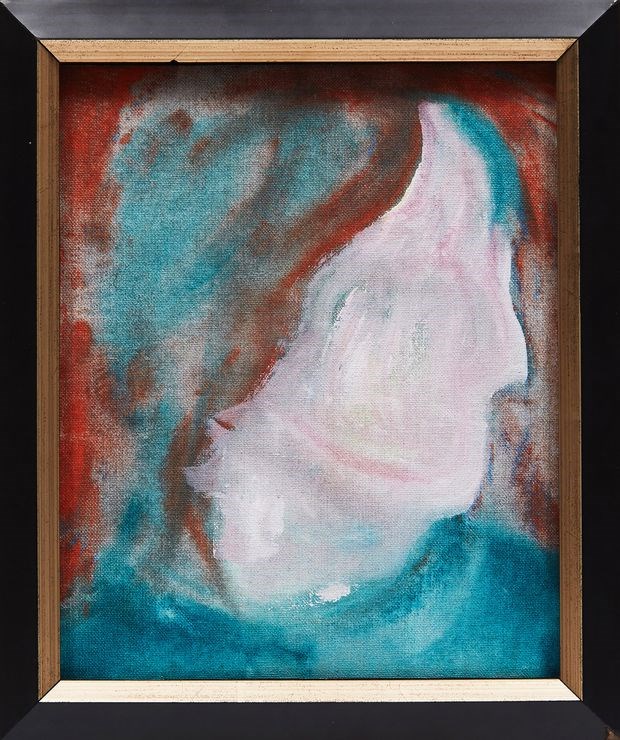This past summer we told you about a story where a David Bowie painting, bought in a second-hand shop for $5, sold for $108,120.
Ever wonder if something similar may be hiding in your house?
See: David Bowie painting bought for five bucks in South River sets a record, selling for over 100 grand
The painting by icon David Bowie, titled DHead XLVI, set a global auction record for the artist. While stories of exciting discoveries aren’t commonplace, they do occur.
How do you know if an inherited painting tucked away in storage holds any value? Before donating it or selling it at a garage sale, find out.
Canadian art experts and fine art auctioneers Cowley Abbott have encountered many art owners through their free valuation events who are shocked to discover they have an important work that is worth significant money.
“Valuable art can be found in the most unexpected places,” says Lydia Abbott, Vice-President of Cowley Abbott. “We often come upon an important work of art that has been inherited or has been in a family home for many years without the owners knowing anything about the artist or value of the work.”
To offer insight into why a specific artwork by an artist is more valuable than others and to make buying art accessible, Cowley Abbott is sharing tips and factors to consider when purchasing or selling art.
When buying for the first time, it’s important to discover your style. Art is an investment, but it should spark an emotional or personal connection and be enjoyable to look at. Take a stroll through an art museum to discover your preferences and explore of variety of styles, genres, and mediums.
Consider the space and take measurements. You may fall in love with a piece, but if it doesn’t suit your space, purchasing it might be impractical.
Set a budget. Affordability, investment, and future value are factors to consider. Auctions reflect the secondary market for an artist and can present realistic expectations for future resale, but like all investments, there is no guarantee a given work will increase in value.
Do your research. Before buying, speak to a specialist and visit a couple of auctions, either in-person or online, as it offers an opportunity to understand the buying process, market trends, and which artists and works attract interest from collectors.
Understanding the aspects that impact value helps ensure prospective buyers or sellers are achieving fair market prices. There are 10 key factors that help specialists determine value - what Cowley Abbott calls “The 10 Commandments of Valuing Art”.
The artist’s popularity and history is the most important element in determining value.
The most popular subjects by an artist hold greater value. A landscape by a member of the Group of Seven - what they are known for - will cost more than a still life.
Size also plays a role. Larger artworks tend to price higher; however; the value will typically decrease for oversized pieces. Wall space is a big factor, marking very large art hard to place and of less interest in the market.
Some mediums, such as an oil or acrylic canvas will often have an exponentially higher value. Works on paper, such as drawings, watercolours, and prints, offer a lower financial entry point and are an excellent option for new collectors who wish to own an original or print by a prominent artist.
Association: well-known artworks that have been featured in museums, exhibitions, important collections, or books usually sell for a greater amount.
Period: an artwork from an artist’s “prime period” will often be worth more.
Quality: a signature work by an artist that was created in their studio will often attract greater interest and value than a quick pencil sketch that might have been completed as a demonstration.
Condition: a damaged artwork, or one that is poorly restored, tends to hold a lower value than one in pristine condition. Request a condition report to consider future conservation or restoration requirements.
Rarity can aid in increasing the value of an artwork, but it can also mean a smaller pool of interest. For instance, a rare sketch for an important painting would have increased value; but rarity can also have an adverse effect, like a floral still life by an artist who is celebrated for abstracts. Both are rare, but can lead to significantly different valuations.
Fashion reflects the artists, schools and movements that are currently popular. For example, the 2016 release Maudie, the movie about the life of painter Maud Lewis, skyrocketed the value of her work at auction, leading to record-setting sales.
These factors are guidelines to understanding value and the driving forces for market trends. For anyone curious to learn more about a painting, print or sculpture they own, Cowley Abbott is offering complementary and confidential preliminary auction valuations with no obligations by contacting [email protected].



